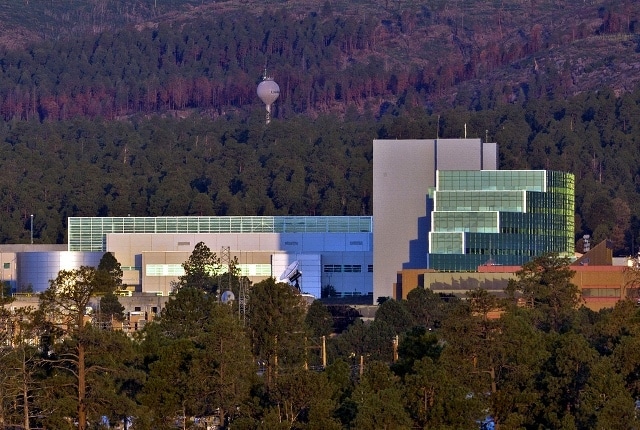Mar 25 2016
 Los Alamos National Laboratory sits on top of a once-remote mesa in northern New Mexico with the Jemez mountains as a backdrop to research and innovation covering multi-disciplines from bioscience, sustainable energy sources, to plasma physics and new materials
Los Alamos National Laboratory sits on top of a once-remote mesa in northern New Mexico with the Jemez mountains as a backdrop to research and innovation covering multi-disciplines from bioscience, sustainable energy sources, to plasma physics and new materials
A Los Alamos-led research team has developed a new water-removal technique that improves the performance of carbon nanomaterials used in fuel cells and batteries. This latest study provides a complete understanding about the critical role water plays in forming catalysts to reduce oxygen in materials. This discovery presents new avenues for designing advanced carbon nanomaterials for batteries and fuel cells.
The implications of understanding water’s role in achieving high-performance layered materials for energy generation and storage devices will be transformational.
Gautam Gupta, Materials Synthesis and Integrated Devices Group, Los Alamos National Laboratory.
The ever-increasing demand on energy resources, restrictions on fossil fuels, along with the growing environmental concerns have made it necessary to develop efficient and affordable metal-air batteries and fuel cells, which provide clean and sustainable energy.
The new study gives a complete understanding about the role water plays in graphene oxide nanosheets or functionalized graphene sheets. Dry films of graphene oxide include a significant volume of added water that builds up between the oxygen-functionalized nanosheets. Graphene oxide is usually produced in aqueous solutions.
Gupta and his research group showed how a simple solvent drying method can remove the accumulated water between the graphitic sheets. When water is removed, the physical structure of these graphene oxide nanosheets changes considerably, and the distance between the nanosheets is also reduced. In addition to this, the researchers also noted that the concentration of functional groups changed significantly, resulting in highly ordered structures. These changes ultimately led to improved electrocatalytic activity, which substantially improves the performance in batteries and fuel cells.
The paper is titled, “Critical Role of Intercalated Water for Electrocatalytically Active Nitrogen-Doped Graphitic Systems,” was published in Science Advances.
The Los Alamos authors are Joseph Dumont, Ulises Martinez, Geraldine Purdy, Piotr Zelenay, Akhilesh Singh, Aditya Mohite, Andrew Dattelbaum, and Gautam Gupta of Los Alamos’ Materials Synthesis and Integrated Devices group; Nathan Mack of the Nuclear Nonproliferation and Security group at Los Alamos; and Edward Holby of the Laboratory’s Metallurgy group.
Collaborators include Oak Ridge National Laboratory, the University of New Mexico, and Rutgers University. The research was conducted, in part, at the Center for Integrated Nanotechnologies, a user facility operated for the Department of Energy Office of Science by Los Alamos and Sandia national laboratories.
The study was funded by a Los Alamos Directed Research Grant, which supports the Laboratory’s Energy Security mission and Materials for the Future Science Pillar.